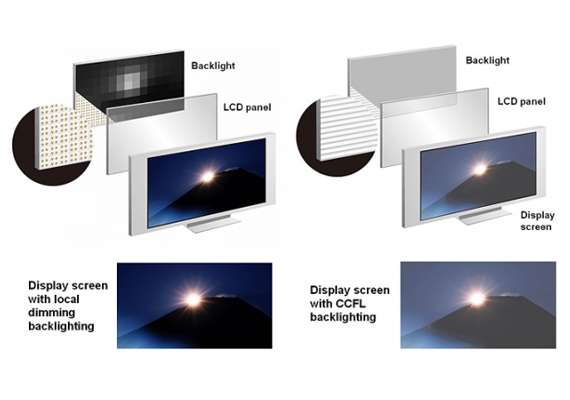New Delhi: During your visit to local electronics shop I am sure that you must have seen LED TVs which are being pushed by TV makers as the latest and greatest flat-screen TVs. I hope this will make you wonder what are LED TVs and what you should know before buying one? Read on to find out more.
What is LCD television
By definition, LCD stands for “liquid crystal display” and technically, both LED and LCD TVs are liquid crystal displays. In general the basis technology is same in both the televisions. And as the name suggests, Liquid Crystal Display is a fluid which has been sandwiched between two plates, and it changes when a current is applied to it. These liquid crystals pass, or block the light, to produce images on the screen when the electric current passes through it.
The crystals do not emit light on their own, but the light comes from the series of fluorescent lamps at the back of the screen.
Why to buy LED TV
On the other hand, an LED TV is actually very much like LCD TV, having a flat-screen which utilizes Liquid Crystal Display technology. But they are backlit with light-emitting diodes (LEDs) as against the standard cold-cathode fluorescent lights (or CCFLs). Overall there are two types of LED backlighting.
One is Edge lighting and the other is Full-Array lighting. In Edge lighting, the series of diodes are arranged along the outside edges of the screen. When the power in on, the light is distributed across the screen. On the other hand, there are several rows of diodes behind the entire surface of the screen, in Full-Array lighting. They give better control over brightness and dimming since the diodes can be turned on and off independently.
The LED-backlit LCDs have been on mainstream store shelves since 2007 but they got popular when Samsung launched its ultrathin models.
To create even thinner TVs, engineers have to omit an extra layer of LEDs and move it to the sides of the display. With this form of backlighting, the LEDs are affixed to all four sides of the TV and light is projected inward to the middle of the TV via "lightguides." Such TVs are called "edge-lit" LED-based LCDs, and are by far the most common available today. However, the problem with edge-lit TVs are that although they are really thin, uniformity suffers.
Difference between LED Vs LCD TV
One of the biggest downsides of LCD TVs is that the picture degrades if you're sitting off to the side or the TV is placed too high or low, based on your eye level. LED backlighting doesn't change any of this.
It is true that LED TVs consume less power, but when compared the difference between consumption of power in these TVs is very less.
Also, LED-powered LCD TVs cost more than non-LED models. With LED TVs now widely available and their traditional LCD counterparts have become almost extinct. But as a contrast the LED-backlit screens offer only a slight advantage.

